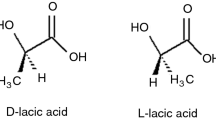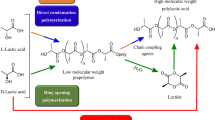Abstract
Propyl-tri(phenylethynyl)silane ((ph-C≡C)3–Si–CH2CH2CH3) monomer (PTPES) was synthesized via Grignard reaction of propyl-trichlorosilane and phenylacetylene in the presence of magnesium and ethylbromide. Its chemical structure was characterized by nuclear magnetic resonance spectroscopy (1H-NMR, 13C-NMR, and 29Si-NMR). The curing behavior and rheological characteristics of the PTPES were analyzed by differential scanning calorimetry (DSC), Fourier transform infrared spectroscopy (FTIR) and rheology techniques. The corresponding kinetic parameters and curing mechanism were also discussed by four well-known kinetic methods, i.e., Kissinger, Ozawa, Flynn–Wall–Ozawa and Friedman methods. Results showed that PTPES possessed a low melting point of 75 °C, a high gelatinization temperature of 333 °C and wide processing window of 258 °C. The cure schedule of PTPES could be determined as follows: (312 °C, 1 h) + (339 °C, 2 h) + (355 °C, 1 h) by dynamic DSC which was further verified by FTIR and rheology. The activation energy E a was calculated as 122.83, 126.88 and 122.17 kJ/mol by Kissinger, Ozawa and Flynn–Wall–Ozawa methods, respectively. The pre-exponential factor lnA and the reaction orders n and m were 23.15 (s−1), 1.43 and 0.36, respectively. The autocatalytic kinetic model was found to be the best description of the curing process by the Friedman method.














Similar content being viewed by others
References
Liu J, Lam JWY, Tang BZ (2009) Acetylenic polymers: syntheses, structures, and functions. Chem Rev 109:5799–5867
Tan D, Wu X, Wang Y, Xu Y, Xing H (2016) Synthesis, characterization and curing behavior of methyl-tri(phenylethynyl)silane. Res Chem Intermed 42:4669–4681
Guo K, Wang H, Li P, Zhu Y, Wang F, Qi H (2015) Boron-containing arylacetylene polymers as a novel carbon precursor: synthesis, thermal curing and carbonization. Mater Lett 160:314–317
Bu X, Zhou Y, Huang F (2016) The strengthening and toughening effects of a novel octa(propargylpropylsulfide) POSS (OPPSP) on silicon-containing arylacetylene (PSA) resin. Mater Lett 174:21–23
Wrackmeyer B, Khan E, Bayer S, Tok O, Klimkina E, Milius W (2010) Alkynylsilanes and alkynyl (vinyl) silanes. Synthesis, molecular structures and multinuclear magnetic resonance study. Zeitschrift- für Naturforschung B 65:725–744
Zhou Q, Feng X, Ni L, Chen J (2007) Thermal characteristics and pyrolysis of methyl-di (phenylethynyl) silane resin. J Appl Polym Sci 103:605–610
Kim C, Jeong K, Jung I (2000) Progress toward limiting generation of dendritic ethynylsilanes (PhC≡C)4− nMenSi (n = 0–2). J Polym Sci Pol Chem 38:2749–2759
Zhou Q, Feng X, Ni L, Chen J (2006) Novel heat resistant methyl-tri (phenylethynyl) silane resin: synthesis, characterization and thermal properties. J Appl Polym Sci 102:2488–2492
Liu H, Harrod JF (1990) Copper (I) chloride catalyzed cross-dehydrocoupling reactions between silanes and ethynyl compounds. A new method for the copolymerization of silanes and alkynes. Can J Chem 68:1100–1105
Kownacki I, Orwat B, Marciniec B, Kownacka A (2014) A new and efficient route for the synthesis of alkynyl functionalized silicon derivatives. Tetrahedron Lett 55:548–550
Zhou Y, Huang F, Du L, Liang G (2015) Synthesis and properties of silicon-containing arylacetylene resins with polyhedral oligomeric silsesquioxane. Polym Eng Sci 55:316–321
Jiang Y, Li X, Huang F, Zhou Y, Du L (2015) o-Carborane-containing poly(siloxane-arylacetylene)s with thermal and thermo-oxidative stabilities. J Macromol Sci Pure 52:476–484
Iwasaki T, Shimizu R, Imanishi R, Kuniyasu H, Kambe N (2015) Copper-catalyzed regioselective hydroalkylation of 1, 3-dienes with alkyl fluorides and Grignard reagents. Angew Chem Int Ed 54:9347–9350
Chen Q, Li Y, Dai Z, Ni L, Hu CP (2005) Synthesis and characterization of methyl-di (phenylethynyl) silane and its network polymer. Acta Chim Sin 63:254–258
Tan D, Shi T, Li Z (2011) Synthesis, characterization, and non-isothermal curing kinetics of two silicon-containing arylacetylenic monomers. Res Chem Intermed 37:831–845
Tsuchimoto T, Fujii M, Iketani Y, Sekine M (2012) Dehydrogenative silylation of terminal Alkynes with hydrosilanes under zinc–pyridine catalysis. Adv Synth Catal 354(16):2959–2964
Zhao S, Zhang G, Sun R, Wong CP (2014) Curing kinetics, mechanism and chemorheological behavior of methanol etherified amino/novolac epoxy systems. Express Polym Lett 8:95–106
Luo Z, Wei L, Liu F, Zhao T (2007) Study on thermal cure and heat-resistant properties of N-(3-acetylenephenyl) maleimide monomer. Eur Polym J 43:3461–3470
Wang H, Wang J, He XY, Feng TT, Ramdani N, Luan MJ, Liu WB, Xu XD (2014) Synthesis of novel furan-containing tetrafunctional fluorene-based benzoxazine monomer and its high performance thermoset. RSC Adv 4:64798–64801
Sastri SB, Keller TM, Jones KM, Armistead JP (1993) Studies on cure chemistry of new acetylenic resins. Macromolecules 26:6171–6174
Mabuda AI, Mamphweli NS, Meyer EL (2016) Model free kinetic analysis of biomass/sorbent blends for gasification purposes. Renew Sust Energ Rev 53:1656–1664
Song X, Xu X (2016) Curing kinetics of pre-crosslinked carboxyl-terminated butadiene acrylonitrile (CTBN) modified epoxy blends. J Therm Anal Calorim 123:319–327
Bai Y, Yang P, Zhang S, Li Y, Gu Y (2015) Curing kinetics of phenolphthalein–aniline-based benzoxazine investigated by non-isothermal differential scanning calorimetry. J Therm Anal Calorim 120:1755–1764
Zhou Q, Ni L (2009) Thermal cure behavior and pyrolysis of methyl-tri(phenylethynyl) silane resin. J Appl Polym Sci 113(1):10–16
Ren R, Xiong X, Ma X, Liu S, Wang J, Chen P, Zeng Y (2016) Isothermal curing kinetics and mechanism of DGEBA epoxy resin with phthalide-containing aromatic diamine. Thermochim Acta 623:15–21
Liu C, Qu C, Wang C, Cao D, Wang D, Xiao W, Feng H, Liu P, Bai X (2016) Non-isothermal curing kinetics, chemorheological behaviour, and IR spectral study of two trifunctional phenylethynyl-terminated imide oligomers compared with the corresponding bifunctional structure. Prog React Kinet Mech 41:1–13
Ke L, Hu D, Lu Y, Feng S, Xie Y, Xu W (2012) Copolymerization of maleimide-based benzoxazine with styrene and the curing kinetics of the resultant copolymer. Polym Degrad Stabil 97:132–138
Bissette AJ, Fletcher SP (2013) Mechanisms of autocatalysis. Angew Chem Int Ed 52:12800–12826
Sastri SB, Armistead JP, Keller TM (1995) Cure kinetics of a multisubstituted acetylenic monomer. Polymer 36:1449–1454
Lehrle RS, Shortland A (1988) A study of the purification of methyl methacrylate suggests that the “thermal” polymerization of this monomer is initiated by adventitious peroxides. Eur Polym J 24:425–429
Lu Y, Li M, Zhang Y, Hu D, Ke L, Xu W (2011) Synthesis and curing kinetics of benzoxazine containing fluorene and furan groups. Thermochim Acta 515:32–37
Acknowledgments
We gratefully acknowledge the financial support of the National Nature Science Foundation of China (Nos. 51507003, 51303005), the Educational Commission of Anhui Province of China (Nos. KJ2013A087 and KJ2013A095) and the Doctor Foundation of the Anhui University of Science and Technology.
Author information
Authors and Affiliations
Corresponding author
Rights and permissions
About this article
Cite this article
Tan, D., Wu, X., Wang, M. et al. Synthesis, characterization and curing behavior of propyl-tri(phenylethynyl)silane. Iran Polym J 25, 687–695 (2016). https://doi.org/10.1007/s13726-016-0457-1
Received:
Accepted:
Published:
Issue Date:
DOI: https://doi.org/10.1007/s13726-016-0457-1




